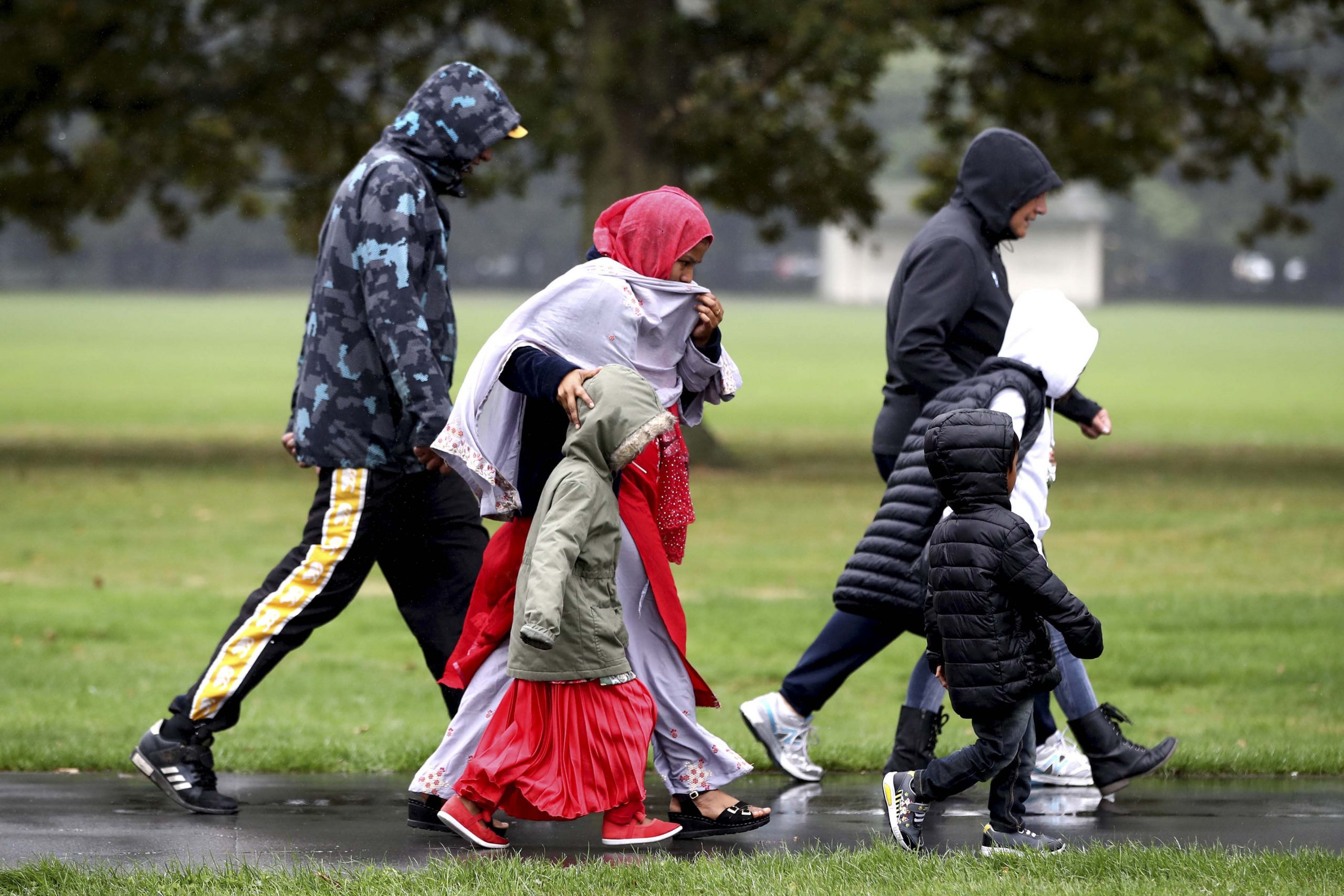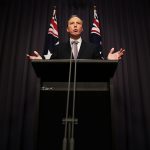A racist massacre in Godzone
Despite its image as a friendly and welcoming country, New Zealand is a settler colonial society with a history of exclusivity when it comes to immigration.
Author:
18 March 2019

For many, the racist and Islamophobic attacks on two mosques in Christchurch, New Zealand, which left at least 50 people dead, are difficult to reconcile with the image of a country known for its friendliness, hospitality and egalitarianism. New Zealand is, after all, referred to as Godzone by many of its citizens.
But the country is a settler colony in which aspirations to be friendly and welcoming have always been intensely and purposefully racial. Historically, New Zealand has been a closed and homogeneous society with a strong sense of conformity.
John Pratt, a New Zealand academic, has said that “throughout the history of New Zealand, the famed qualities of friendliness and openness have been denied to those who were outside its narrow parameters of acceptability”. According to Pratt: “New Zealand was never intended to be opened up as a paradise for allcomers: only the specific groups who could be accommodated within its homogeneous domains would be welcomed.”
As in Australia, the colonial project in New Zealand was driven, among other things, by the ideology that it should be “a white man’s country”. This is an explicitly racist idea that includes a commitment to a degree of egalitarianism within the white population. It was profoundly influential in Australia in the late 19th century and it is in Australia that the ideology of “a white man’s country”, popular among working-class whites, was comprehensively developed and implemented through state policies.
It was first expressed as anti-Chinese riots in the Australian goldfields in the late 19th century and then developed into White Labourism, which eventually became the White Australia Policy – the Immigration Restriction Act aimed at reducing the number of Chinese people in the country. White Labourism came to South Africa with Australian immigrants in the late 19th century and resulted in actively racist forms of trade unionism. Apartheid was, in part, an offshoot of the racist ideology of “a White man’s country” and White Labourism.
Related article:
Brenton Tarrant, the Australian man behind the Christchurch attacks, comes from a country with a deep and poisonous well of racist politics, from which contemporary racism can and does draw. His political manifesto, The Great Replacement, suggests that his politics borrow from the ideology of “a white man’s country”.
According to media reports, The Great Replacement is used as shorthand by the new right in Europe and its settler colonies to refer to the paranoid notion that Muslims are trying to replace white populations and Islamise Western countries.
Selective immigration
The politics of “a white man’s country” is not new in New Zealand. Throughout the 20th century, it had a watered-down, unstated version of a White Immigration Policy. For most of that century, successive New Zealand governments favoured white immigrants, preferably white people from Western Europe and North America.
To discourage Chinese immigration to New Zealand, a series of legislative restrictions were introduced, which included a poll tax on new arrivals and an education test. At one point, legislation was passed to ensure that ships could only transport only one Chinese passenger per 200 tonnes of cargo.
British settlers in New Zealand aimed to build a “better Britain” in the Pacific. The idea that New Zealand was Godzone emerged as colonial trope used by British settlers to express an aspiration for this “better Britain”.
Today, it continues to support the myth that perpetuates the colonial illusion that “the country is special”. This illusion is entrenched. Richard John Seddon, prime minister of New Zealand at the turn of the 19th century, famously deemed New Zealand “God’s own country”.
According to one of the country’s celebrated historians, Michael King, the New Zealand liberal government of the early 20th century felt that “Seddon’s ‘God’s own country’ was, among other things, a social laboratory which other countries could study with envy and profit”.
Social laboratory
Godzone was an interesting social laboratory for white settlers, a society with social democratic features and a much greater degree of egalitarianism than Britain. But for the Maori it was a colonial project on a grand scale. For the Chinese, it was a Herrenvolk state.
Today, for immigrants who are not white, New Zealand is generally a career graveyard. Because of the institutionalised racism in the country, professionals who are not white hit a concrete ceiling rather than a glass ceiling. A 2012 PhD study by Hassan Haji Ibrahim found that Somali women were targeted in public, harassed and insulted because of their Islamic dress, and believe that Islamic dress is a barrier to finding employment in New Zealand.
When the Hagley Community College in Christchurch built a prayer facility for the Muslim students in the early 2000s, then minister of education Trevor Mallard condemned the college “for using taxpayers’ money to build a mosque”. The prayer facility was referred to as a “government-funded mosque” in the national press and often treated as if it were some sort of scandal.
Those who are treating last week’s massacre as a complete shock often neglect to note the history of racist attacks on mosques in New Zealand.
Abdullah Drury, the author of Islam in New Zealand, writes that in 1998, a Hamilton mosque was “gutted by arson … Police never caught the culprits although a substantial reward was offered.” After the 9/11 terrorist attacks in the United States, it was reported that local mosques in Hamilton were vandalised.
Honest reckoning required
In my research on racism in New Zealand, I have found that Somalis and other black Africans struggle to reconcile what Pratt calls New Zealand’s traits of friendliness, hospitality and informality with the country’s pronounced racism. This is not a contradiction. As Jonathan Hyslop’s research shows, White Labourism and the notion of “a white man’s country” was, from the start, a potent and dangerous combination of white racism and white egalitarianism.
In my book, Uncommodified Blackness: The African Male Experience in Australia and New Zealand (Palgrave Macmillan, 2017), I write that there is a powerful white mythology in New Zealand that takes the view that “bad colonialism” happened in Australia and other places, such as Africa.
Related article:
Historically, the dominant settler narrative portrayed the colonial past in New Zealand by way of a version of the Brazilian Lusotropicalist ideology, a white narrative celebrating the practice of racial-cultural intimacy among the Portuguese and those they colonised. This narrative dovetailed nicely with the image of a friendly and welcoming New Zealand, an “enlightened” settler state that supposedly oversaw a benign colonial project.
It is partly because of this narrative that many people find it difficult to believe that such a devastating racist and Islamophobic attack happened in New Zealand. Europe and its settler colonies will not be able to address the profoundly racist ideas that they continue to harbour, and which continue to result in racist violence of various kinds, if there is not an honest reckoning with history and a genuine commitment to active antiracism in the present.
Dr Mandisi Majavu is a lecturer of sociology in the department of sociology and anthropology at Nelson Mandela University. He has lived and studied in New Zealand.


